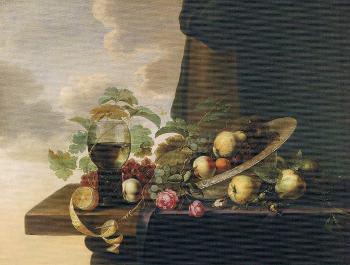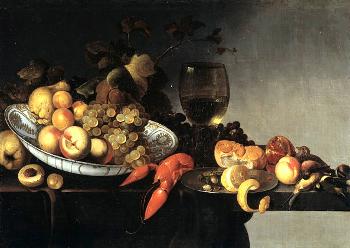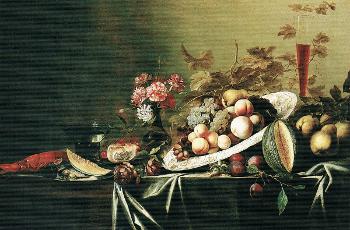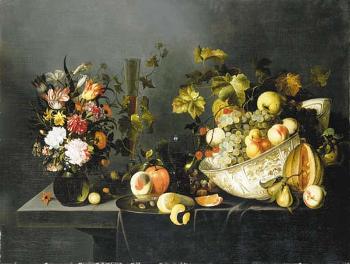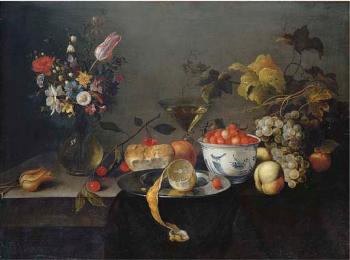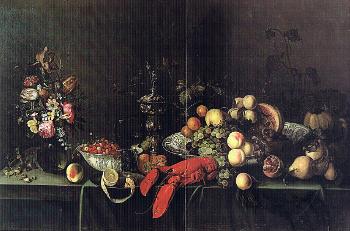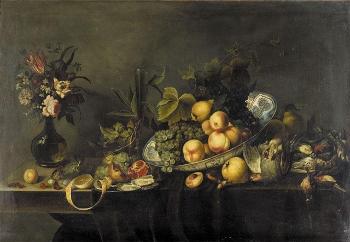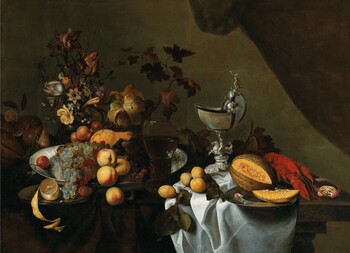13.500 €
A fruit still life with a Wan-Li dish and a Roemer glass
Oil on canvas : 67,9 X 89,5 cm
Signed lower left on the table ledge “M.Simons”
Frame : 79,4 X 101,4 cm
In short
Michiel Simons is a characteristic Utrecht still life painter, who produced attractive ornate or Pronk still lifes. He was influenced by the Bosschaerts and by Jan Davidsz. de Heem.
About Michiel Simons
Dutch painter
Utrecht?, date of birth unknown – 1673, Utrecht
Still life painter of flowers and fruit; Simons painted occasionally also game still lifes.
Dated works range from 1648 to 1657.
It seems likely that our painter was mainly active in the city of Utrecht, where he was recorded in 1669, 1671 and finally in 1673.
Simons did develop a strong individual and recognizable style. His flower and fruit still lifes show the influence of Ambrosius II Bosschaert (Arnemuiden 1602 – 1645 Utrecht) and of his brother Johannes Bosschaert (in or near Middelburg circa 1607 – 1628 Dordrecht).
Simons’ compositions are also indebted to Jan Davidsz.de Heem (Utrecht 1606 – 1684 Utrecht). All three these painters have been active in Utrecht at some stage of their career.
In his turn Simons seems to have influenced the so-called Monogrammist JHV, of whom dated works are known between 1652 and 1663.
I should also mention two Femish painters.
- A homonymous Michiel Simons, who was active in Antwerp between 1602 and 1632. A basket of flowers by his hand is mentioned in an inventory in Antwerp in 1644. Although no paintings are known by him today some scholars call him Michiel I and our painter Michiel II.
- And then there is the so-called Pseudo-Simons, active in Antwerp circa 1650 until circa 1680. Not a single signed work is known by this anonymous hand to whom over one hundred paintings have been attributed. For some very strange reason he has been baptized the Pseudo-Simons, although he is not even Dutch and his works actually stand much closer to Jan Pauwel Gillemans I and II.
About a strange combination: white wine with lemon juice
The typical German Roemer glass at left is filled with white wine. It is easily recognizable by its decoration of the stem with prunts to ensure a safe grip. The Dutch imported wine from the Brodeaux region in France and from nearby Germany. In those days German white wine from the valleys of the Rhine and Moselle was so sweet that it was customary in Holland to season it with lemon juice to temper that excessive sweetness. This explains the presence of a partly peeled lemon in front of it.
Why should you buy this painting?
Because this is a nice, fully signed example of an Utrecht still life.
Comparative paintings
Click photos for more details

